#pobitora
Explore tagged Tumblr posts
Text

A kingfisher perched on a stick at the Pobitora Wildlife Sanctuary, Assam, India. There are 12 species of kingfisher across the country, all equally striking, with plumage ranging from electric blue to chestnut, orange, turquoise, black-and-white, emerald green and golden
Photograph: Xinhua/Shutterstock
#xinhua#shutterstock#photographer#kingfisher#bird photography#pobitora wildlife sanctuary#assam#india#animal#nature
27 notes
·
View notes
Link
#Pobitora wildlife sanctuary#Testate amoeba#Grassland#Keystone species#Conservation#Greater one horned rhinoceros
1 note
·
View note
Text
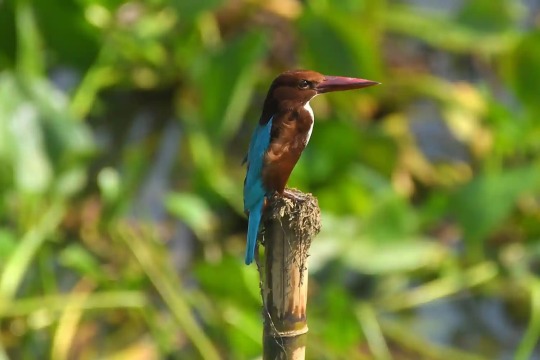
A kingfisher perched on a stick at the Pobitora Wildlife Sanctuary, Assam, India.
There are 12 species of kingfisher across the country, all equally striking, with plumage ranging from electric blue to chestnut, orange, turquoise, black-and-white, emerald green and golden.
Photograph: Xinhua/Shutterstock / Guardian Newspaper #wildlifephotography
10 notes
·
View notes
Text
10 Offbeat Places in Assam
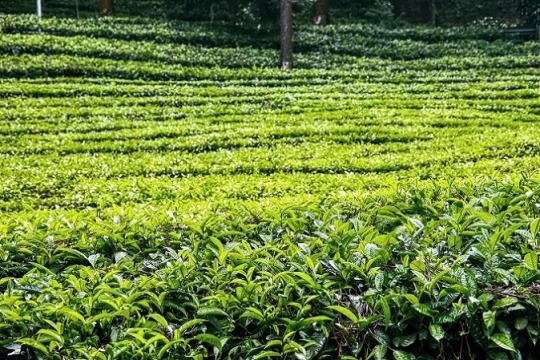
10 Offbeat Places in Assam
Assam, a beautiful state in Northeast India, is known for its tea gardens, wildlife sanctuaries, and stunning natural beauty. However, there are also some offbeat places in Assam that are worth visiting. Here are 10 of them:
Haflong: Located in the Dima Hasao district, Haflong is the only hill station in Assam. It offers beautiful views of the surrounding hills and valleys, and is a great place for trekking and camping.
Majuli: Majuli is the world's largest river island and is located on the Brahmaputra River. It is a cultural hub of Assam and is known for its traditional arts, crafts, and music.
Sivasagar: Sivasagar was the capital of the Ahom Kingdom and is home to several historical monuments such as the Rang Ghar, Talatal Ghar, and Kareng Ghar. It is also known for its traditional Assamese cuisine.
Manas National Park: Manas National Park is a UNESCO World Heritage site and is known for its diverse wildlife, including tigers, elephants, and rhinos. It is also home to several indigenous communities.
Digboi: Digboi is an oil town located in the Tinsukia district. It is home to the oldest operational oil refinery in Asia and is known for its colonial architecture and tea gardens.
Umananda Island: Umananda Island is located in the Brahmaputra River and is home to the Umananda Temple, dedicated to Lord Shiva. It is also a great place for birdwatching and river cruises.
Jatinga: Jatinga is a small village in the Dima Hasao district and is known for its mysterious bird suicides. Every year, during the months of August and September, several migratory birds are found dead in the village.
Hajo: Hajo is a pilgrimage site for Hindus, Muslims, and Buddhists. It is home to several ancient temples, mosques, and Buddhist stupas.
Pobitora Wildlife Sanctuary: Pobitora Wildlife Sanctuary is located in the Morigaon district and is known for its one-horned rhinoceroses. It is also home to several other species of wildlife such as leopards, wild boars, and deer.
Jorhat: Jorhat is a major city in Assam and is known for its tea gardens and golf courses. It is also home to several historical monuments such as the Gibbon Wildlife Sanctuary and the Dhekiakhowa Bornamghar.
Which city is very beautiful in Assam?
Assam is home to several beautiful cities, each with its own unique charm. However, if you are looking for a city that is known for its scenic beauty, then Guwahati is a great option. Located on the banks of the Brahmaputra River, Guwahati offers stunning views of the river and the surrounding hills. It is also home to several temples, parks, and wildlife sanctuaries, making it a great destination for nature lovers. Other beautiful cities in Assam include Jorhat, Tezpur, and Dibrugarh.
Which is the best place in Assam for picnic?
Assam has several beautiful places that are perfect for picnics. Here are a few options:
Pobitora Wildlife Sanctuary: Pobitora Wildlife Sanctuary is located in the Morigaon district and is known for its one-horned rhinoceroses. It is a great place for a picnic as it offers beautiful views of the grasslands and the wildlife.
Deepor Beel: Deepor Beel is a freshwater lake located near Guwahati. It is a popular spot for birdwatching and is a great place for a peaceful picnic.
Chandubi Lake: Chandubi Lake is a natural lake located in the Kamrup district. It is surrounded by hills and forests and is a great place for a picnic with family and friends.
Kakochang Waterfalls: Kakochang Waterfalls is located in the Jorhat district and is a popular picnic spot. The waterfall is surrounded by lush green forests and is a great place for a dip in the cool waters.
Hoollongapar Gibbon Wildlife Sanctuary: Hoollongapar Gibbon Wildlife Sanctuary is located in the Jorhat district and is home to several species of primates, including the Hoolock Gibbon. It is a great place for a picnic with a touch of wildlife adventure.
These are just a few of the many options for picnics in Assam. Be sure to check weather and safety conditions before planning a picnic in any location.
Which is the most visited place in Assam?
Assam is a beautiful state with several popular tourist destinations. However, the most visited place in Assam is Kaziranga National Park. This UNESCO World Heritage site is home to the world's largest population of one-horned rhinoceroses and is also home to tigers, elephants, and several other species of wildlife. The park is known for its beautiful landscapes and is a popular destination for wildlife enthusiasts, nature lovers, and photographers. Every year, thousands of tourists from around the world visit Kaziranga National Park to experience its natural beauty and wildlife.
Which place in Assam is the tourist keen?
Assam has several places that are popular among tourists. However, the place in Assam that tourists are most keen to visit is probably the Kaziranga National Park. This national park is home to the world's largest population of one-horned rhinoceroses and is also home to tigers, elephants, and several other species of wildlife. It is a UNESCO World Heritage site and is known for its beautiful landscapes and rich biodiversity. Tourists are often keen to visit Kaziranga National Park to experience its natural beauty and wildlife, and to participate in activities such as jungle safaris and birdwatching.
Which is Assam's only hill station?
Haflong is the only hill station in Assam. It is located in the Dima Hasao district, about 310 km south of Guwahati. Haflong is situated at an altitude of about 680 meters above sea level and is surrounded by hills, forests, and waterfalls. It is also home to several tribes such as the Dimasa, Hmar, and Zeme Nagas. The town is known for its scenic beauty, cool weather, and adventure activities such as trekking, hiking, and paragliding. Haflong is a great destination for those looking to escape the heat and enjoy some time amidst nature.
Where is the Butterfly Park in Assam?
The Butterfly Park in Assam is located in the Pobitora Wildlife Sanctuary. It is situated in the Morigaon district, about 50 km east of Guwahati. The Butterfly Park is a part of the Pobitora Wildlife Sanctuary and is dedicated to the conservation and breeding of various species of butterflies. The park has a wide range of plants and trees that are required for the breeding of butterflies. Visitors can see the various stages of butterfly development and learn about the different species of butterflies found in Assam. The Butterfly Park is a popular attraction in Assam, especially for nature lovers and those interested in wildlife conservation.
Read more
3 notes
·
View notes
Text
Explore the Best Guwahati Tour Packages for an Unforgettable Experience

Introduction to Guwahati Tour Packages
Guwahati, the gateway to Northeast India, is a city that beautifully blends rich cultural heritage, spiritual significance, and natural beauty. Nestled along the banks of the Brahmaputra River, Guwahati offers diverse attractions, from ancient temples to wildlife sanctuaries and bustling markets. Whether you are a nature lover, adventure enthusiast, or someone seeking spiritual solace, our Guwahati tour packages are designed to offer you an unforgettable experience.
Why Choose Guwahati for Your Next Vacation?
Guwahati, Assam’s largest city, is a perfect mix of modernity and tradition. It is home to iconic temples like Kamakhya Temple, mesmerizing wildlife at Kaziranga National Park, scenic landscapes, and a vibrant cultural scene. Whether you are planning a family trip, a romantic getaway, or a solo adventure, Guwahati tourism packages cater to all types of travelers.
Best Guwahati Tour Packages
We offer a variety of Guwahati holiday packages, customized to suit different preferences and budgets. Here are some of the best options:
1. Guwahati City Tour Package
Duration: 2 Days / 1 Night
Highlights:
Kamakhya Temple – One of the 51 Shakti Peethas
Umananda Temple – Located on Peacock Island
Assam State Museum – Showcasing Assam’s rich history
Fancy Bazaar – A shopping hub for souvenirs
Inclusions: Hotel stay, breakfast, sightseeing, and local transport
2. Guwahati & Shillong Tour Package
Duration: 4 Days / 3 Nights
Highlights:
Explore Guwahati’s major attractions
Visit the mesmerizing Shillong Peak & Elephant Falls
Boating at Umiam Lake
Enjoy the lively atmosphere at Police Bazaar
Inclusions: Hotel stay, transportation, guided tours, and meals
3. Guwahati and Kaziranga National Park Tour
Duration: 5 Days / 4 Nights
Highlights:
Wildlife safari at Kaziranga National Park to see the one-horned rhinoceros
Visit the famous Kamakhya Temple
Explore the lush green tea gardens
Enjoy a Brahmaputra River cruise
Inclusions: Luxury accommodation, jungle safari, all meals, and sightseeing
4. Guwahati & Majuli Island Tour Package
Duration: 6 Days / 5 Nights
Highlights:
Experience the world’s largest river island, Majuli
Visit the ancient Satras (Vaishnavite monasteries)
Witness breathtaking sunrises over the Brahmaputra River
Explore Guwahati’s key attractions
Inclusions: Ferry rides, cultural experiences, meals, and accommodation
Top Attractions Included in Guwahati Travel Packages
1. Kamakhya Temple
One of the most revered Hindu pilgrimage sites, this temple is dedicated to Goddess Kamakhya and is known for its annual Ambubachi Mela.
2. Umananda Island
The smallest inhabited river island in the world, home to the Umananda Temple, offers scenic beauty and spiritual significance.
3. Assam State Zoo and Botanical Garden
Perfect for wildlife lovers, this zoo houses tigers, rhinos, and exotic birds.
4. Assam State Museum
A must-visit to learn about Assam’s history, culture, and traditions through its vast collection of artifacts.
5. Brahmaputra River Cruise
An evening cruise on the mighty Brahmaputra River is an unmissable experience, offering stunning sunset views.
6. Pobitora Wildlife Sanctuary
Ideal for wildlife enthusiasts, this sanctuary boasts a high density of the Indian one-horned rhinoceros.
7. Deepor Beel Wildlife Sanctuary
A paradise for bird watchers, this freshwater lake is home to several migratory birds.
Best Time to Visit Guwahati
The ideal time to book a Guwahati travel package is between October and April, when the weather is pleasant, and wildlife sightings are at their best. The Ambubachi Mela in June and Bihu Festival celebrations in April are great times to experience Assamese culture.
How to Reach Guwahati?
By Air
Guwahati’s Lokpriya Gopinath Bordoloi International Airport is well-connected to major Indian cities like Delhi, Mumbai, Kolkata, and Bangalore.
By Train
Guwahati Junction is the main railway station, offering excellent connectivity to different parts of India.
By Road
Guwahati has a well-developed road network with regular bus services to nearby states like Meghalaya, Arunachal Pradesh, and Nagaland.
Why Book Guwahati Holiday Packages with Us?
Expertly Curated Itineraries: Our packages ensure that you experience the best of Guwahati and beyond.
Affordable Prices: We offer competitive pricing with no hidden charges.
Customizable Packages: We tailor your trip to match your preferences.
24/7 Customer Support: Our travel experts are available to assist you anytime.
Conclusion
Guwahati, with its rich heritage, scenic beauty, and diverse wildlife, is an ideal destination for travelers of all kinds. Whether you are planning a short getaway or a long vacation, our Guwahati tourism packages promise a seamless and enriching experience. Book your Guwahati holiday package today and embark on a memorable journey through the heart of Assam!
0 notes
Text
[ad_1] Morigaon: The Wildlife Range of Pobitora, under the Guwahati Wildlife Division, observed World Wetlands Day on Sunday in collaboration with Aranyak NGO.The event, held at Tamuliduva Wetland in Assam's Morigaon district, involved students from Hadukpar LP School of Mayong to raise Read More [ad_2] Source link
0 notes
Text
[ad_1] Morigaon: The Wildlife Range of Pobitora, under the Guwahati Wildlife Division, observed World Wetlands Day on Sunday in collaboration with Aranyak NGO.The event, held at Tamuliduva Wetland in Assam's Morigaon district, involved students from Hadukpar LP School of Mayong to raise Read More [ad_2] Source link
0 notes
Text
Wildlife Adventure in Assam
Nestled in the northeastern part of India, Assam is a paradise for wildlife lovers. Known for its lush tea gardens, mighty Brahmaputra River, and unique cultural heritage, the state is also home to some of the richest and most diverse wildlife in the country. Assam offers a captivating journey through pristine landscapes teeming with a wide array of flora and fauna, including some rare and endangered species. For adventurers, conservationists, and photographers alike, a wildlife adventure in Assam promises an unforgettable experience.
In this blog, we’ll explore Assam’s key wildlife destinations, the unique species found here, the best times to visit, and practical tips for a successful wildlife adventure.
1. Kaziranga National Park: The Pride of Assam
Kaziranga National Park is perhaps the most iconic wildlife destination in Assam and a UNESCO World Heritage Site. Located in the heart of Assam, it is world-renowned for its population of the endangered one-horned rhinoceros. This park hosts more than two-thirds of the world’s one-horned rhino population, and sighting these magnificent creatures in their natural habitat is a surreal experience.
Highlights of Kaziranga National Park
One-Horned Rhinoceros: The park’s conservation success story, it’s hard to miss these remarkable animals.
Tiger Sighting: Kaziranga is also a Tiger Reserve, and while these elusive cats are challenging to spot, it’s not impossible!
Elephants and Water Buffalo: Kaziranga’s rich grasslands make it a habitat for wild elephants and water buffalo.
Birdwatching Paradise: With over 500 species of birds, including migratory and resident varieties, Kaziranga is an ideal spot for birdwatchers.
Best Time to Visit: November to April Safari Options: Jeep and elephant safaris are popular ways to explore the park. Early morning safaris are recommended for the best wildlife viewing.
2. Manas National Park: A UNESCO Natural Heritage Site
Situated along the foothills of the Himalayas, Manas National Park is another gem on Assam’s wildlife map. Manas is both a UNESCO World Heritage Site and a Project Tiger Reserve, covering a vast area of lush forests, grasslands, and river systems. Manas is particularly known for its spectacular landscapes and biodiversity, making it an ideal destination for nature lovers and adventure seekers alike.
Highlights of Manas National Park
Endangered Wildlife: Manas is home to the endangered Assam Roofed Turtle, Golden Langur, and the Pygmy Hog.
Birdwatching Opportunities: The park is a sanctuary for rare birds like the Bengal Florican and the Great Hornbill.
Rafting on the Manas River: For the adventurous, river rafting on the Manas River is a thrilling experience, offering both beautiful views and wildlife sightings.
Best Time to Visit: October to April Safari Options: Jeep safaris, elephant safaris, and river rafting. Note that guided nature walks are also possible in specific zones of the park.
3. Dibru-Saikhowa National Park: An Ornithologist’s Dream
Dibru-Saikhowa National Park, located in the floodplains of the Brahmaputra and Lohit rivers, is one of Assam’s lesser-known but equally mesmerizing wildlife spots. This park is one of the few in India where you can spot feral horses, originally brought by the British but left to roam free over the years. However, the park is most popular among birdwatchers.
Highlights of Dibru-Saikhowa National Park
Birding Paradise: Dibru-Saikhowa hosts species like the Black-breasted Parrotbill and Jerdon’s Babbler.
Feral Horses: This rare sight is an interesting addition to the park’s biodiversity.
River Dolphins: Keep an eye out for the endangered Ganges River Dolphin in the river waters.
Best Time to Visit: November to March Safari Options: Boat safaris are a unique way to explore this park, allowing you to experience both river and land wildlife.
4. Pobitora Wildlife Sanctuary: The Hidden Gem
Though smaller in size compared to Kaziranga, Pobitora Wildlife Sanctuary boasts one of the highest densities of one-horned rhinos in the world. Located just an hour’s drive from Guwahati, this sanctuary provides a convenient wildlife escape for those short on time.
Highlights of Pobitora Wildlife Sanctuary
One-Horned Rhino Sanctuary: Pobitora’s primary attraction is its high population of rhinos, which are easier to spot due to the sanctuary’s compact size.
Birdwatching Spot: Pobitora is home to several migratory bird species, making it a birdwatcher’s haven.
Local Villages and Culture: Many traditional Assamese villages surround Pobitora, and a visit can provide insight into rural life in Assam.
Best Time to Visit: November to February Safari Options: Jeep and elephant safaris are available, and birdwatching tours can be arranged.
5. Nameri National Park: A Jungle Trekker’s Paradise
For those looking to explore Assam’s wildlife on foot, Nameri National Park offers a rare opportunity for jungle trekking. Located along the Assam-Arunachal Pradesh border, Nameri’s unique blend of dense forests, rivers, and meadows makes it a scenic and peaceful spot for wildlife lovers.
Highlights of Nameri National Park
Walking Safaris: Nameri is one of the few parks in India where you can trek with a guide, bringing you closer to nature.
Mahseer Fishing: The Jia Bhoroli River is home to the endangered Golden Mahseer fish, and catch-and-release fishing is allowed.
Birdwatching Haven: Birds like the White-winged Wood Duck, Rufous-necked Hornbill, and various kingfishers can be spotted here.
Best Time to Visit: November to April Safari Options: Walking safaris with armed guards, boat rides, and fishing experiences.
6. Hollongapar Gibbon Sanctuary: Home of the Hoolock Gibbon
Hollongapar Gibbon Sanctuary, also known as Gibbon Wildlife Sanctuary, is a unique forest reserve in Assam dedicated to preserving the endangered Western Hoolock Gibbon, India’s only ape species. This sanctuary is a lush evergreen forest that also houses stump-tailed macaques and capped langurs.
Highlights of Hollongapar Gibbon Sanctuary
Hoolock Gibbons: The sanctuary is dedicated to these rare and charming apes. Spotting them in the treetops is an extraordinary experience.
Pristine Forests: The dense jungle provides a true sense of wilderness and is great for exploring nature up close.
Diverse Primate Species: In addition to Hoolock Gibbons, other primates like capped langurs, rhesus macaques, and Assamese macaques are also found here.
Best Time to Visit: October to March Safari Options: Guided walks and hikes through the forest with local experts.
Packing Tips for a Wildlife Adventure in Assam
Clothing: Wear comfortable, neutral-colored clothing to blend in with the environment and avoid disturbing wildlife. Light, moisture-wicking clothes are ideal for warm days, while warmer layers are necessary for early morning and evening safaris.
Footwear: Invest in sturdy hiking boots or comfortable walking shoes to make long safaris and treks comfortable.
Insect Repellent: Many of Assam’s wildlife areas are surrounded by dense forests, so carry insect repellent to avoid mosquito bites.
Camera Gear: Assam offers fantastic photography opportunities, so bring a good camera and telephoto lens for close-ups of animals from a safe distance.
Binoculars: For birdwatchers, binoculars are essential for spotting small, far-off birds and other creatures.
Hydration and Snacks: Safaris can be long and tiring, so bring water bottles and some light snacks to stay energized.
Tips for a Safe and Respectful Wildlife Experience
Follow Park Guidelines: Each park has its own rules to ensure the safety of visitors and wildlife. Follow all guidelines strictly.
Avoid Loud Noises: Animals are sensitive to loud sounds, which can disrupt their natural behavior. Keep noise to a minimum.
Do Not Litter: Respect nature by not leaving any waste behind. Carry a small bag to store your trash.
Maintain Distance: Animals are best observed from a safe distance. Avoid sudden movements that might provoke them.
Respect Local Culture: Many of Assam’s wildlife areas are located near traditional villages. Be respectful of local customs and avoid disturbing the local communities.
The Richness of Assam’s Wildlife Awaits You
With its spectacular range of habitats and diverse species, Assam offers a truly immersive wildlife experience for those willing to venture into its wilds. Whether you’re after the thrill of spotting a tiger in Kaziranga, walking alongside elephants in Manas, or listening to the morning calls of gibbons in Hollongapar, a wildlife adventure in Assam is guaranteed to leave you with lifelong memories.
A journey to Assam’s wilderness is not just about adventure; it’s also an opportunity to support conservation efforts that protect this unique biodiversity. As you witness Assam’s natural wonders, remember that every visit contributes to the preservation of this irreplaceable ecosystem. So pack your bags, ready your camera, and embark on an unforgettable wildlife adventure in Assam! You can hire a car for exploring Assam, then you can rent self drive car from GoRidez cause they are the best car rental agency in Guwahati.
0 notes
Text
Assam's population of one-horned rhinoceros has risen from 600 in the 1960s to over 3,000 by 2024, largely due to conservation efforts. 🦏🇮🇳

Kaziranga National Park holds 80% of India's rhinos, with smaller populations in Orang, Pobitora, and Manas parks.
Assam's Chief Minister attributed the success to habitat expansion and anti-poaching measures, with poaching dropping 86% since 2016.
#rhino #india #animals #wildlife #allthenewz

0 notes
Text
Unexplored Wildlife Sanctuaries in India: Hidden Gems for Adventurous Travelers
India's rich biodiversity is often associated with famous national parks like Ranthambore and Bandhavgarh, but the country also holds lesser-known wildlife sanctuaries that are equally fascinating. In this blog, we'll explore some of these hidden gems—destinations ideal for adventurers who seek raw, unfiltered experiences with nature.
From the misty forests of Dandeli Wildlife Sanctuary in Karnataka to the lush grasslands of Pobitora Wildlife Sanctuary in Assam, India has many uncharted territories filled with exotic flora and fauna. These destinations are not only stunning but also crucial for the conservation of endangered species. Along with that, they offer solitude and an intimate connection with the wild, far from the bustling crowds of more popular destinations.
1. Discovering India’s Hidden Wildlife Sanctuaries
India is renowned for its wildlife reserves, with tigers as the star attraction. However, the lesser-known wildlife sanctuaries are a treasure trove for those willing to explore off-the-beaten-path destinations. These sanctuaries, often overlooked by mainstream tourism, boast rich ecosystems, dense forests, and diverse wildlife—ranging from elephants and leopards to rare birds and reptiles.
Dandeli Wildlife Sanctuary, Karnataka
Located in the Western Ghats, the Dandeli Wildlife Sanctuary is a hidden gem that offers a perfect mix of adventure and serenity. Home to black panthers, tigers, elephants, and the elusive Malabar giant squirrel, Dandeli is an ideal spot for those looking for more than the typical tiger safari. The sanctuary is also a bird-watcher's paradise, with over 200 bird species, including hornbills and kingfishers. Kayaking in the Kali River and jungle treks further elevate the experience.
Visitors to Dandeli can enjoy unique wildlife sightings in a quieter, less commercialized environment. Staying in eco-lodges and campgrounds makes the adventure even more thrilling, where you are surrounded by the sounds of the jungle, without the disruption of large tourist crowds. Opting for a nature guide from the local community enhances your chances of spotting the elusive species.
Pobitora Wildlife Sanctuary, Assam
The Pobitora Wildlife Sanctuary, often called the "mini Kaziranga," is another hidden treasure for wildlife enthusiasts. Situated just 48 km from Guwahati, this sanctuary is home to the highest density of Indian one-horned rhinoceroses. The grassland terrain and wetlands support a rich variety of species, from Asiatic water buffaloes to migratory birds.
Though lesser-known than Kaziranga National Park, Pobitora provides an incredible opportunity to witness rhinos in their natural habitat, with fewer visitors competing for sightings. Jeep safaris and elephant rides offer closer encounters with the majestic animals, and the sanctuary's close proximity to Guwahati makes it an easy day-trip option for tourists in Northeast India.
2. The Importance of Supporting Lesser-Known Sanctuaries
By visiting lesser-known wildlife sanctuaries, travelers can help reduce the tourism pressure on well-established national parks while contributing to conservation efforts in underfunded areas. These hidden sanctuaries often face financial constraints, making eco-tourism an essential source of income for park maintenance, wildlife protection, and local communities.
Tourists often underestimate the importance of visiting these less popular parks, yet these areas play a vital role in conserving India’s biodiversity. Supporting these sanctuaries not only contributes to local economies but also helps raise awareness about the broader conservation efforts necessary to protect endangered species.
Bhimgad Wildlife Sanctuary, Karnataka
Tucked away in the remote forests of Karnataka, Bhimgad Wildlife Sanctuary is yet another unexplored gem. Known for its unique bat colonies, including the rare Wroughton’s free-tailed bat, Bhimgad is a paradise for nature enthusiasts interested in caves and wildlife conservation. The sanctuary is also home to elephants, tigers, and leopards, as well as numerous species of birds and reptiles. The terrain offers a mix of forest trails, grasslands, and cave formations, making it perfect for exploratory treks.
Bhimgad offers an offbeat experience, especially for those with a keen interest in wildlife research and conservation. The sanctuary’s unique ecosystem is an essential habitat for many endangered species, and responsible eco-tourism here plays a significant role in preserving these fragile environments.
For adventurous travelers, exploring Bhimgad’s forests, caves, and rivers offers a thrilling, untouched wilderness experience far from the typical wildlife circuit.
3. Offbeat Adventure and Responsible Tourism
Visiting these lesser-known sanctuaries offers a more personalized, offbeat adventure experience. Travelers have the opportunity to immerse themselves in nature without the crowds, enjoy one-on-one interactions with expert naturalists, and participate in activities like trekking, bird-watching, and river safaris.
However, it’s crucial that visitors adopt responsible tourism practices to minimize their environmental impact. Staying in eco-friendly accommodations, respecting wildlife by keeping a safe distance, and avoiding unnecessary plastic waste can make a significant difference in these fragile ecosystems.
The Role of Local Communities
One of the most significant benefits of visiting lesser-known sanctuaries is the support it provides to local communities. Many of these regions rely heavily on eco-tourism to generate income, and by opting for local guides, purchasing handicrafts, or staying in community-run lodges, travelers contribute directly to the livelihoods of people living in or around these wildlife areas.
In regions like Pobitora and Dandeli, eco-tourism has played a role in reducing poaching and deforestation by providing sustainable alternatives for local communities. Supporting community-based tourism ensures that local populations see the value in conserving wildlife and are empowered to protect their natural heritage.
Conclusion: Exploring India’s Uncharted Wildlife Sanctuaries
While India’s famous national parks are undoubtedly worth a visit, the country’s lesser-known wildlife sanctuaries offer an equally thrilling and enriching experience. From the dense forests of Dandeli to the rhino-studded grasslands of Pobitora, these hidden gems allow travelers to connect with nature on a deeper level, away from the bustling tourist crowds.
Moreover, visiting these offbeat destinations plays a crucial role in wildlife conservation and supports local communities, making your adventure both meaningful and impactful. As responsible tourists, we have the opportunity to protect India’s rich biodiversity while discovering some of the country’s most unspoiled wilderness areas.
For those seeking an unforgettable wildlife experience, check out the customized safaris offered by Tigerwalah, where ethical tourism meets adventure.
0 notes
Text

A one-horned Indian rhinoceros grazes with her calf at the Pobitora wildlife sanctuary in north-eastern India. The reserve has the highest density of Indian rhinos in the world. The species’ survival is considered something of a success story, since population numbers were under severe threat in the late 20th century due to habitat loss and poaching. Conservation efforts by Indian and Nepalese wildlife authorities have hopefully brought it back from the brink
Photograph: Anuwar Hazarika/NurPhoto/Shutterstock
#anuwar hazarika#photographer#nurphoto#shutterstock#one-horned indian rhinoceros#rhino#pobitora wildlife sanctuary#india#animal#mammal#wildlife#nature#rhinoceros
23 notes
·
View notes
Text
Adventure Activities In Guwahati

Nestled on the banks of the mighty Brahmaputra, Guwahati is a haven for adventure enthusiasts. From thrilling river rafting expeditions on the turbulent waters of the Brahmaputra to exhilarating treks through the lush green hills of Assam, Guwahati offers a plethora of adventure activities. Explore the verdant landscapes with a hike up the enchanting Kamakhya Hills, or dive into the depths of the river with an unforgettable scuba diving experience. Wildlife aficionados can embark on a safari at the Pobitora Wildlife Sanctuary, home to the Indian one-horned rhinoceros. For those seeking a bird’s-eye view, paragliding over the scenic beauty of Assam’s landscapes provides an unmatched adrenaline rush. Guwahati, with its diverse topography and rich natural beauty, is the perfect playground for adventure seekers looking to satiate their thrill-seeking spirit.
Read More - https://wanderon.in/blogs/adventure-activities-in-guwahati
0 notes
Text
Top 10 Adventure Activities in Guwahati: An Adrenaline Junkie’s Guide
Guwahati, the gateway to Northeast India, is a city that perfectly blends natural beauty with vibrant culture. But beyond its serene landscapes and historic temples, Guwahati offers a plethora of adventure activities that promise to get your adrenaline pumping. Here are the top 10 adventure activities you must try in Guwahati. And let’s not forget the places to visit in Guwahati that add cultural spice to your adventure-filled visit.
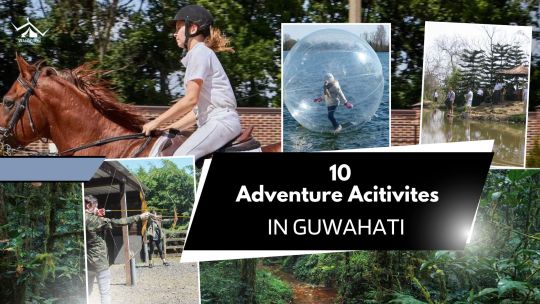
1. River Rafting on the Brahmaputra
One of the most exhilarating experiences you can have in Guwahati is river rafting on the mighty Brahmaputra River. The stretch near Guwahati offers challenging rapids that are perfect for both beginners and experienced rafters. The breathtaking scenery along the riverbanks adds to the thrill of navigating through the turbulent waters.
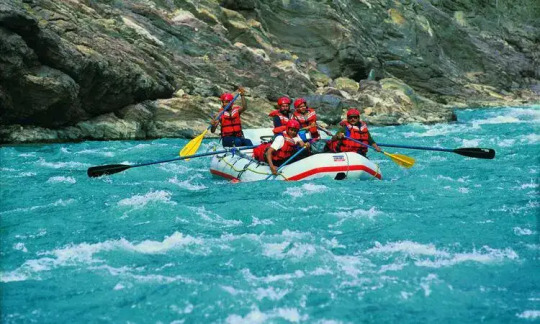
2. Trekking in the Khasi and Jaintia Hills
Guwahati is the starting point for numerous trekking routes that lead into the beautiful Khasi and Jaintia Hills of Meghalaya. These treks take you through lush forests, scenic valleys, and cascading waterfalls, offering a chance to explore the region’s rich biodiversity and stunning landscapes.
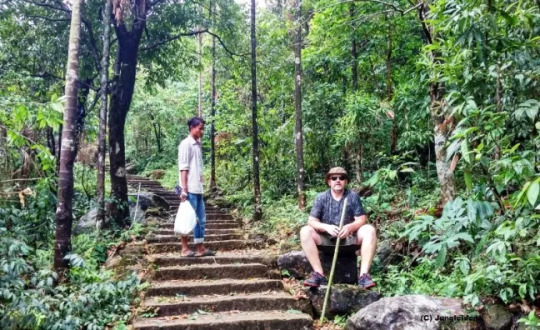
3. Wildlife Safari in Pobitora Wildlife Sanctuary
Located just a short drive from Guwahati, Pobitora Wildlife Sanctuary is home to the highest density of one-horned rhinoceroses in the world. Embark on a thrilling jeep safari through the sanctuary to spot these majestic creatures, along with other wildlife such as wild boars, leopards, and a variety of bird species.
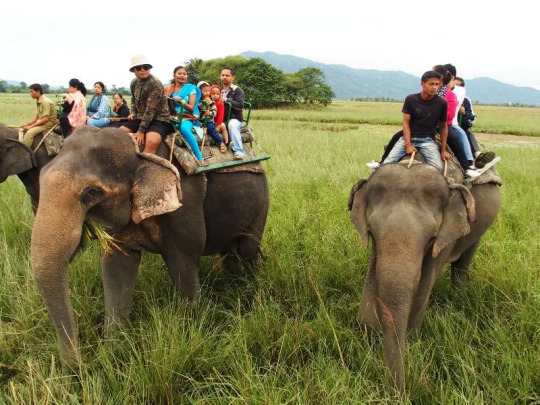
4. Rock Climbing at Assam State Zoo Cum Botanical Garden
For rock climbing enthusiasts, the Assam State Zoo Cum Botanical Garden offers a challenging artificial rock wall. The facility caters to climbers of all skill levels, providing a great opportunity to hone your climbing techniques in a controlled environment.
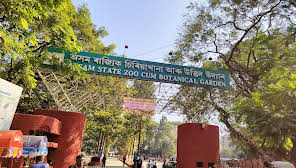
5. Paragliding in Kaziranga
While Kaziranga is famous for its national park, it also offers an exciting paragliding experience. Glide over the lush green landscapes and enjoy panoramic views of the region’s natural beauty. The sensation of flying like a bird is unmatched and provides an unforgettable adventure.

6. Zip Lining in Meghalaya
Just a short trip from Guwahati, the lush hills of Meghalaya offer thrilling zip-lining experiences. Soar above dense forests and gushing rivers, feeling the rush of air as you zip from one point to another. It’s a perfect activity for those seeking a mix of excitement and scenic beauty.
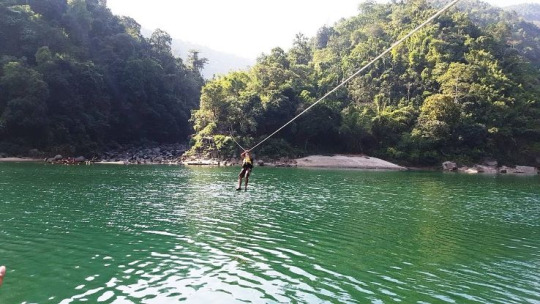
7. Kayaking in Umiam Lake
Umiam Lake, located near Shillong and accessible from Guwahati, is a popular destination for water sports. Kayaking on the tranquil waters of this expansive lake is both relaxing and adventurous. Paddle through the serene surroundings and enjoy the picturesque landscape.
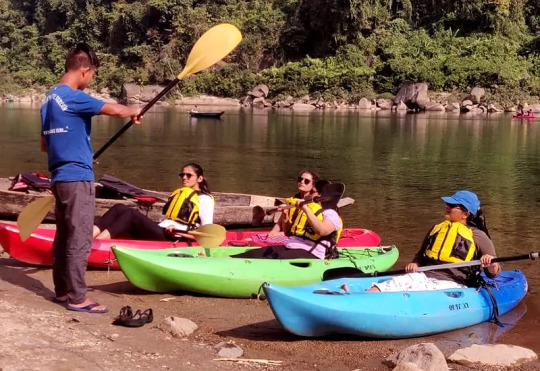
8. Camping in Chandubi Lake
Escape the hustle and bustle of the city by camping at Chandubi Lake, situated about 64 km from Guwahati. The lake, surrounded by dense forests and tea gardens, is an ideal spot for camping, boating, and fishing. Spend a night under the stars and wake up to the sounds of nature.

9. Hot Air Ballooning over Guwahati
Experience the thrill of hot air ballooning over Guwahati and enjoy a bird’s-eye view of the city and its surroundings. The serene early morning or late afternoon flights provide stunning vistas of the Brahmaputra River, the cityscape, and the rolling hills in the distance.
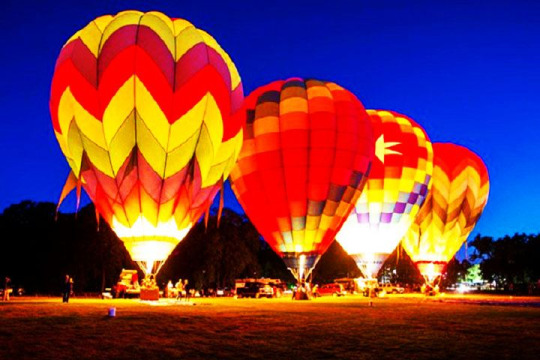
10. Mountain Biking in Meghalaya
The hilly terrain of Meghalaya, accessible from Guwahati, is perfect for mountain biking. Ride through challenging trails that wind through forests, across rivers, and up steep inclines. This adventure activity offers both excitement and an opportunity to immerse yourself in the natural beauty of the region.
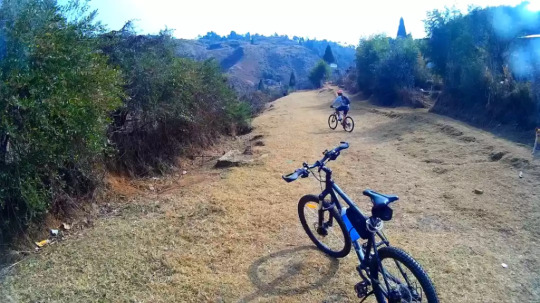
Conclusion
Whether you’re a seasoned adventurer or a thrill-seeking novice, Guwahati and its surroundings offer a wide range of activities that cater to all levels of experience. From water sports to trekking and wildlife safaris, the region promises unforgettable adventures that will leave you longing for more. So pack your bags, put on your adventure gear, and get ready to explore the wild side of Guwahati!
0 notes
Text
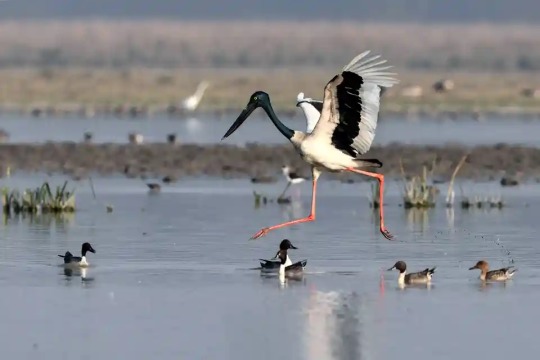
Morigaon, India. A black-necked stork forages for food at a wetland in Pobitora wildlife sanctuary. Photograph: Biju Boro/AFP/Getty Images / Guardian Newspaper #stork
0 notes
Text
0 notes
Text
Discover Lower Assam: Top Picnic Spots and Tourist Attractions
Introduction
Assam, often referred to as the 'Land of Red Rivers and Blue Hills,' is a state in northeastern India that is known for its rich cultural heritage, natural beauty, and diverse wildlife. Lower Assam, a region within Assam, boasts an array of enchanting tourist places and picnic spots that cater to the desires of every traveler. In this blog, we will take you on a virtual journey through Lower Assam and introduce you to some of the best picnic spots and tourist destinations.
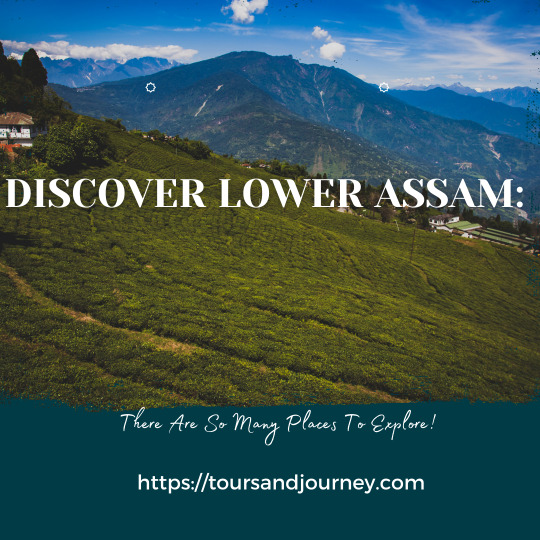
Manas National Park
Manas National Park, a UNESCO World Heritage Site, is one of Lower Assam's crown jewels. Located on the foothills of the Himalayas, it is a sanctuary for various endangered species, including the Indian rhinoceros and Bengal tiger. The park offers a picturesque landscape and the chance to witness diverse flora and fauna while picnicking along the riverbanks of Manas.
Kaziranga National Park
Kaziranga National Park is another renowned wildlife sanctuary in Lower Assam. Home to the world's largest population of one-horned rhinoceroses, Kaziranga is a must-visit for nature enthusiasts. Picnicking at the designated spots in the park provides an opportunity to spot these majestic creatures, along with elephants, wild water buffalo, and a wide range of bird species.
Pobitora Wildlife Sanctuary
Pobitora Wildlife Sanctuary, often referred to as "Mini Kaziranga," is famous for its dense population of rhinoceroses. The sanctuary is a fantastic spot for a serene picnic and wildlife photography, making it an ideal day trip for nature lovers.
Hajo
Hajo is a town in Lower Assam that is home to several religious and historical sites. The Hayagriva Madhava Temple, Powa Mecca, and the Hajo Powa Mecca are some of the most important attractions here. The lush green surroundings and the Brahmaputra River nearby make Hajo a perfect spot for a relaxing picnic.
Sualkuchi
Sualkuchi, often called the 'Manchester of Assam,' is famous for its silk industry. Visitors can explore the silk weaving traditions and even buy some exquisite Assamese silk as souvenirs. A riverside picnic in Sualkuchi, with the view of the scenic countryside, is a great way to enjoy a day.
Barpeta
Barpeta is a town known for its rich cultural heritage. The Shri Shri Madhav Deva Satra is a must-visit, with its exquisite architecture and cultural significance. You can have a peaceful picnic by the Barpeta Tank and immerse yourself in the town's historical charm.
Tezpur
Tezpur, often called the 'City of Eternal Romance,' offers a blend of history, nature, and adventure. The Agnigarh Hill, Kolia Bhomora Setu, and Mahabhairab Temple are some of the top attractions. Enjoy a picnic along the banks of the Brahmaputra River while taking in the scenic beauty and tranquility.
Nalbari
Nalbari is another beautiful town in Lower Assam known for its serene ambiance. The Dadara and Pacharia Hills offer a spectacular panoramic view of the region. You can pack a picnic and savor the tranquility and beauty of Nalbari.
ConclusionLower Assam, with its mesmerizing tourist places and delightful picnic spots, is a traveler's paradise waiting to be explored. Whether you're a nature enthusiast, a history buff, or someone looking for a serene getaway, Lower Assam has something to offer for everyone. So, plan your next trip to this enchanting part of Assam, and let Tours And Journeys be your guide to discovering the hidden gems of this beautiful region. Don't forget to pack your picnic basket and create unforgettable memories amidst the natural beauty of Lower Assam.
0 notes